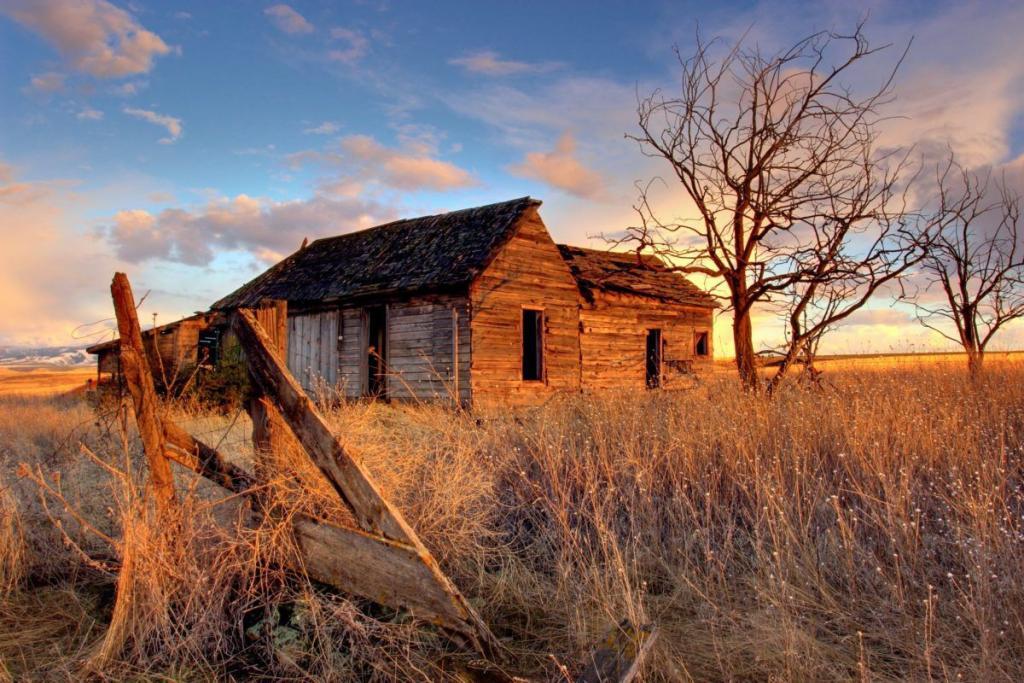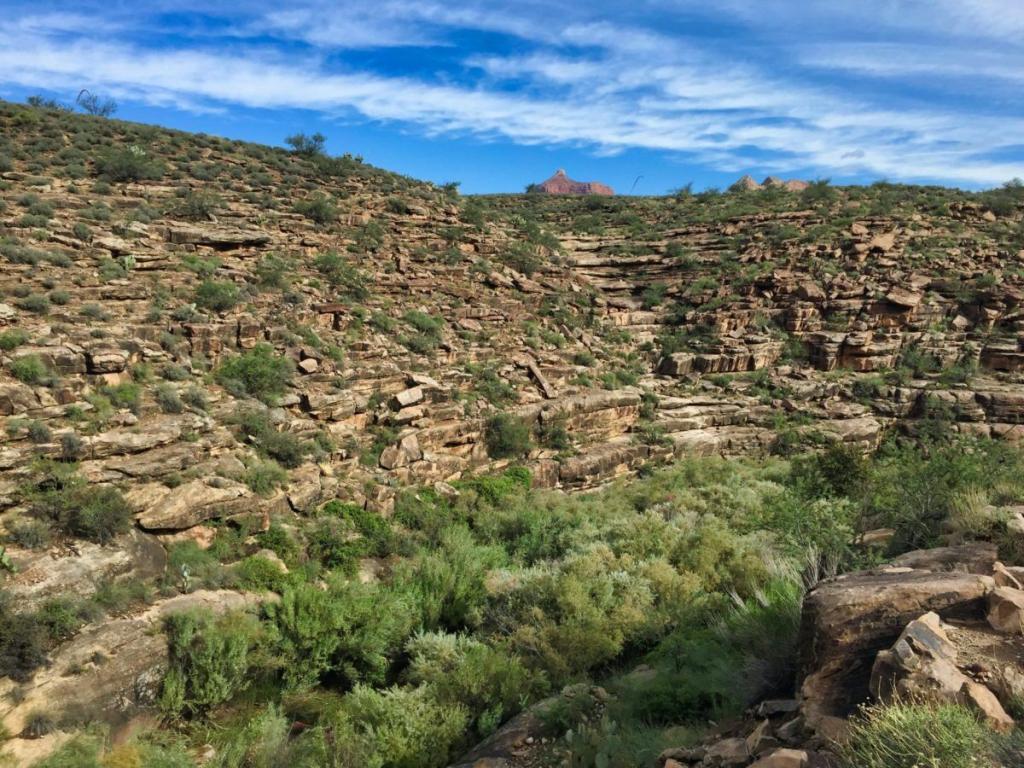Urban Legend: The Ghosts of Slaughterhouse Canyon of Arizona
In 1882 the town of Kingman, Arizona was officially established; throughout its history it had served as both a military camp and a reservation for Native Americans. It eventually experienced growth when a section of railroad was routed through the area.
The Gold Rush
The Gold Rush started in Arizona around 1858 and just like elsewhere in the western United States, it was a rough experience for those who expected to strike it rich. Once prospectors realized their chance of finding gold in Arizona was rare, they instead sought out the more common copper and silver ores. At one point, the worth of gold sank below that of copper and silver, due to its lack of prevalence in the region.
The established families that were uprooted and relocated in the west in search of wealth and success ended up being the ones who sacrificed the most. After lengthy and often excruciatingly difficult searches, many ended up starving to death.
The Ghostly Legend of Slaughterhouse Canyon
Like any urban legend that has arisen from times of extreme hardship, this story reeks of trauma spurned by sickness, starvation, heartbreak, and madness. This particular ghost story is one that swiftly turned from being a simple tragedy to macabre madness, which is why this canyon was put on the map of paranormal destinations.
Luana’s Canyon
When the first white settlers found the area, the area was named Luana’s Canyon, after the matriarch of the impoverished family who lived in a small wooden shack near the dry wash in the heart of the canyon.

Dreams of Wealth
As one might expect, living in a small shack in the desert was no easy task. One miner, notably a dreamer, wanted to be able provide a better life for his wife Luana and their children. This miner would regularly venture off into the mountains to work in the gold mines and to search for food for his family. Their lack of a regular income made it difficult to keep food on the table, so the only food the family had available to them was what the miner was able to bring back from his regular expeditions.
The miner would set of to the Northwestern Mountains on his trusty mule, but different accounts of this story can’t agree on whether the miner left home every two weeks, or if he would be gone for two weeks at a time. What is known is that this was a pretty typical experience during the Gold Rush era. Regardless of how often he was away from home, his family’s only source of food, money, and supplies was what the miner was able to bring back with him. Luana and the children could consistently expect the miner to return with what they needed for their comfort and survival.
One fateful day, the miner kissed his wife, Luana, and children goodbye and was on his way—unfortunately, that would be the last time the family would see their father. Days turned to weeks and soon Luana began to worry that something had happened to her husband. As the supplies dwindled, her concerns that her husband had fallen ill, had an accident, or worse, had been killed by wild animals, or even the victim of robbery. The miner had seemingly become another tragic victim of the unforgiving Gold Rush.
Descent Into Madness
Luana’s reliance upon her husband’s consistency meant that she had not rationed any of the supplies that her husband had brought back on his last trip, so when food and supplies ran scarce the family began to starve. Living alone in the canyon meant that the family had no other possible means of support and soon the children wither and wept in pain. Despite being pale and weak with starvation, their screams and cries echoed throughout the canyon and even traveled on the nighttime breeze. The starving sobs of her children constantly begging Luana for food began to tear her down mentally.
Each day that went by pushed Luana closer toward the brink of insanity until one day, she just could no longer stand to see her children suffer and she snapped. Unable to cope with the reality of watching her children starve to death, Luana’s psychosis drove her to do the unthinkable. One night during a thunderstorm, tormented by her children’s screams and own agonizing hunger, she put on her wedding dress and slaughtered her own children to end their suffering.
Her mind lost, she chopped their dead bodies up into several pieces, splattering the walls of the small shack with blood, which earned it the name of the Slaughterhouse. After finishing her horrible deed, she carried the pieces of her children and tossed their remains into the river. At the river she collapsed into a heap, her wedding dress soaked in the blood of the children she had slain. Luana was overcome with sadness and guilt; she remained on the river bank, wailing and screaming over what she had done until she succumbed to starvation herself, the next morning.
Slaughterhouse Canyon

Today, Slaughterhouse Canyon can be accessed by the public, it’s only a twelve minute drive from Kingman, AZ. It is said, that on quiet nights when the moon is full and the air is thick, that those brave enough to venture into the desert canyon after midnight are likely to have experiences. The dark oppressive nights allow the anguished screams of the mother and the bloody cries of her slaughtered children can still be heard throughout the canyon.
Similar Legends
The legend of Slaughterhouse Canyon bears striking similarities to other urban legends and ghost stories, such as the woman in white and the tragic Mexican legend of La Llorona, or the Weeping Woman. While it’s true that the stories are similar, make no mistake, they are separate legends.
What seems to be a common thread in all renditions of these stories is that the woman murders her children, but it’s the reason behind their vicious murder that varies from story to story. In La Llorona the most frequent rendition is that the mother kills her children after she finds that her husband has been unfaithful. However, every account of the Legend of the ghosts of Slaughterhouse Canyon alleges that the husband was not only a caring and loving partner, but a devoted father as well.
Personal Accounts & Experiences
Locals will tell you that it was popular when they were of high school age to load up a car with their peers and park down in the canyon by the remains of the old slaughterhouse shack. They would roll their windows down and sit in silence as they waited for Luana—inevitably, they would hear strange sounds that would prompt them to vacate the premises.
Another account recalls their experiences of hearing the stories of Slaughterhouse Canyon and their regular trips to the area with their brother. Their motives were simple curiosity and the desire to be teenagers away from prying eyes. They would have bonfires and act their age without consequence, until one night, after midnight they began to hear the wailing cries surrounding them. A quick search of the area revealed nothing, but frightened them enough to leave the canyon entirely.
Others still, primarily ghost hunters in search of the ghosts of Slaughterhouse Canyon, report that while driving down the road that leads into the canyon they would witness a mysterious woman wearing a black dress and dark veil while walking down the side of the road. Upon turning back to find her again she had mysteriously disappeared.
Sources
- https://www.audible.com/pd/Slaughterhouse-Canyon-Podcast/B09VPCS1ZQ
- https://www.azhauntedhouses.com/real-haunt/luanas-canyonslaughterhouse-canyon.html
- https://www.wattpad.com/640316150-urban-legends-haunted-places-etc-the-ghost-of
- https://medium.com/@juleana/slaughterhouse-canyon-acdaee28cd0b
- http://m.kdminer.com/news/2017/oct/31/legend-slaughterhouse-canyon
- https://www.onlyinyourstate.com/arizona/slaughterhouse-canyon-az
- https://discover.hubpages.com/religion-philosophy/Terrifying-Tale-of-Slaughterhouse-Canyon
- https://www.azcentral.com/story/travel/arizona/road-trips/2018/09/10/arizona-mining-history-wild-west/953080002
- https://books.google.com/books?id=1SY-EAAAQBAJ&lpg=PT147&ots=TtfG3HgQAv&dq=Luana’s%20Canyon%20Arizona&pg=PT147#v=onepage&q=Luana’s%20Canyon%20Arizona&f=false

Georgia-based author and artist, Mary has been a horror aficionado since the mid-2000s. Originally a hobby artist and writer, she found her niche in the horror industry in late 2019 and hasn’t looked back since. Mary’s evolution into a horror expert allowed her to express herself truly for the first time in her life. Now, she prides herself on indulging in the stuff of nightmares.
Mary also moonlights as a content creator across multiple social media platforms—breaking down horror tropes on YouTube, as well as playing horror games and broadcasting live digital art sessions on Twitch.
